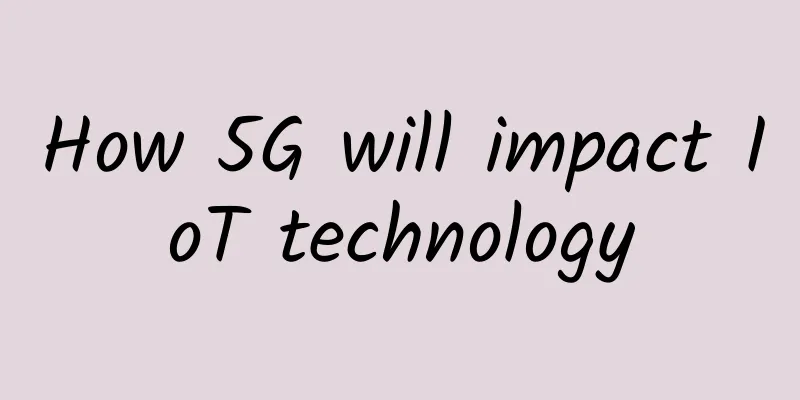The Importance of Layered Security in Edge Computing

|
In this article, we will introduce the role of information security in the Internet of Things, its architecture and importance in the field of edge computing. Information security has always followed a layered model, and this deep defense can help users protect resources in the event that one layer is compromised. Since edge devices have the ability to offload computing and analytical workloads from data center servers, they can also serve as a mechanism for end-to-end authentication. With this understanding in mind, let’s take a look at how different levels of security deal with edge workloads.
1. Hardware layer The large number of breaches and complexity has pushed OEMs to build security into devices from the design phase of the device. At the hardware level, it has established TPMs (trusted platform modules), which integrate encryption keys in the chip that can be used for device authentication at the software layer. But if the keys are shared on the bus, the keys involved may still be vulnerable. Such issues can be easily addressed if encryption/decryption via a non-shared key approach occurs in the TPM. 2. Communication Layer The medium for data transmission should be secure to avoid man-in-the-middle attacks and other similar attacks. This communication can be classified into the following: Local communication, where endpoint devices communicate with one or more edge gateways that provide an entry point to the enterprise network after authentication. Remote communication, where edge gateways communicate with each other through an orchestration layer or a centralized cloud platform Edge gateways provide security through encryption and X.509 certificates, and they also act as protocol translators, converting disparate data from multiple devices to conform to a single protocol, such as Message Queuing Telemetry Transport (MQTT). MQTT is a lightweight protocol designed for high-latency, low-bandwidth networks. 3. Cloud Security To maintain data integrity, sensitive data should be moved from the edge to the cloud in an encrypted manner. Edge orchestrators, a software layer for the management and configuration of edge devices, come into the picture and simplify the encryption of data from the edge to the cloud and vice versa. In addition, digital certificates play a vital role in the authentication of other clouds or third-party applications that try to communicate with the user's cloud service. 4. Continuous lifecycle management Without the latest patches or upgraded edge device or endpoint sensor firmware, it is extremely important to regularly remotely update all edge devices and endpoints as new and sophisticated attacks occur every day. The above control measures will reduce the number of security threat vectors, including:
With the rapid growth of connected terminals, from temperature sensors in cars to mobile devices and smart grids, a series of edge clouds are emerging. These clouds serve specific users, thereby providing low latency and consuming less bandwidth. Nevertheless, it is very important to choose the right infrastructure to run these edge workloads. Containers have great advantages in this regard, but where should containers be hosted? Virtual machines or bare metal? The answer depends on the edge workloads that users plan to run. Securing these new edge clouds is critical, and users need to enforce encryption of data in transit and at rest, and protect communications with the centralized cloud. Only through secure design and embedding security mechanisms in all components/layers involved can users' edge efforts be on the right track. |
<<: Discussing the future of TOSCA and NFV
Recommend
HostXen recharges 300 yuan and gets 50 yuan / recharges 618 yuan and gets 150 yuan, Hong Kong 2G memory VPS monthly payment starts from 50 yuan
HostXen is a DIY-configurable cloud hosting platf...
MQTT protocol, someone finally explained it clearly
[[409407]] This article is reprinted from the WeC...
Fairytale Town: $4.19/month KVM-1GB/10G SSD/1TB/Japan Data Center
Fairytale Town is a Chinese hosting company estab...
5G R17 freeze time postponed for another half a year: What is the reason? What is the impact?
After two uncertain postponements, the 5G R17 fre...
5G improves network determinism and supports digital transformation
[[326206]] Operators see enterprise and industria...
Wi-Fi 6: What's different and why does it matter?
Wi-Fi 6 is the next generation wireless standard ...
Comprehensive Guide to Fiber Optic Boxes
Fiber cassettes are an essential part of a fiber ...
When will the price of NB-IoT modules drop below 20 yuan?
The cost of NB-IoT, especially the module cost, h...
KVMLA 11th Anniversary: Japan/Singapore E3 dedicated server special price 280 yuan/month, VPS host 35 yuan/month
KVMLA is a well-established Chinese hosting compa...
SoftShellWeb December Special Package, Netherlands/San Jose/Taiwan VPS monthly payment of $9.99
SoftShellWeb has released a special package for D...
What is 6G? It may appear in 2030, crushing 5G without any pressure
5G has already been deployed, so what about 6G? W...
Cloud computing has dominated network infrastructure for many years, and it’s time for the 5G era to usher in the next chapter!
[[262785]] Technavio predicts that the applicatio...
Number portability experience report: the process and risks are all revealed
This article has time and regional limitations. T...
China's Internet world under the epidemic is being "mirrored" around the world
DingTalk made its debut in Japan. "Well... t...
Do you understand the principle of Ethernet data transmission?
[[276059]] Routing is done based on the destinati...









